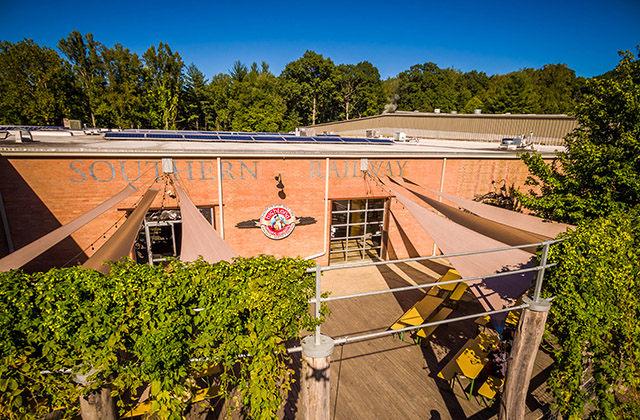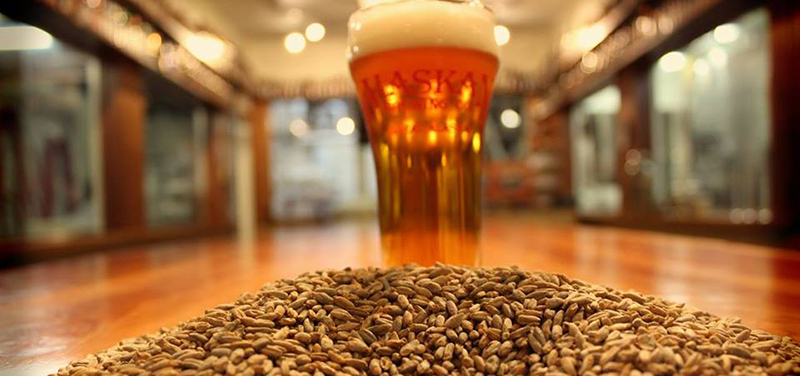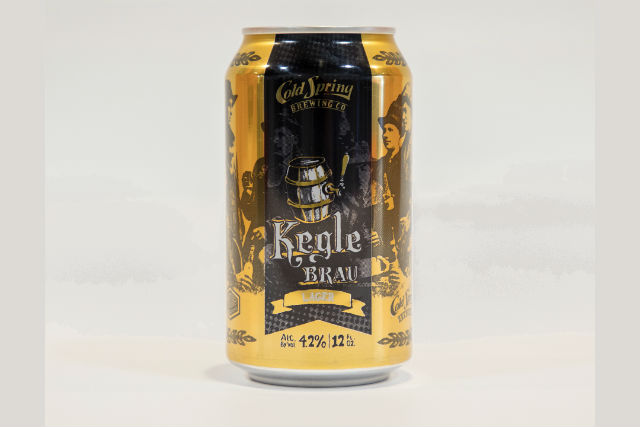
Finding alternative ways to get rid of spent grains can be a weight for a growing brewery. Early on, breweries usually can find people in its area that are willing to use the spent grain as compost, chicken feed, cattle feed or other ways that are simple and are able to be a use to someone else.
Eventually the amount produced for larger breweries outweigh that local need, and that’s when it can be a problem.
Being innovative in making beer isn’t the only place a brewery can flex its creative muscles.
With New Belgium Brewing expanding its reaches with an East Coast facility in Asheville, North Carolina, pre-planning on what to do with the spent grain was tackled before the first brick was laid.
Working with local companies and helping farmers reduce costs while its brewery grows has been on the minds of Highland Brewing in Asheville as well.
Meanwhile, in Juneau, Alaska, with no cows to feed and composting wasn’t an option it wanted on the table while the cost of shipping spent grain to farms in the lower 48 states becoming a burden, Alaskan Brewing decided to create a biofuel out of its waste product from brewing in the mid 1990s.
That has expanded over the years into creating a boiler system that reduces diesel-fuel consumption by 60 percent, said Alaskan Communications Manager Andy Kline. Nearly 10 years after opening in 1986, owners Geoff and Marcy Larson expanded from a 10-barrel system to 100 BBLs, meaning 10 times as much spent grain was available.

That was going to be way too much for locals to use, so Alaskan looked into drying the grain to lessen the weight to ship it south to Washington State.
Finding something to do with it and being innovative with it was a key for the Larsons.
“[Landfilling] was never an option,” Kline said, “even though it was cost effective. It wasn’t something to fit with our ethics of being innovative and sustainable in brewing.”
So Geoff Larson and his team of internal engineers began working on a way to convert the dried spent grain into biofuel to power its boilers.
Originally started for use in February of 2013, a tweak to the system was made in 2015 to help feed the grain in more effectively.
“The value of spent grain as a fuel source to brewers based on what the average cost of fuel is at that time is actually higher value than its value as feed,” Kline explained. “At a certain scale that can be big money. We feel there might be a highest value use and it may well be as a fuel source.”
Kline said the most interested brewers have been nano breweries or smaller operations. But he also noted that at this time, the system that Alaskan has created wouldn’t be beneficial except for breweries that are at or more than 100,000 BBLs.
The Alaskan team has began presenting their technology, including a presentation at the 2016 Craft Brewers Conference in Philadelphia.
“It may make sense for some and not others,” Kline said, “but if there is a brewery that is having a problem with their spent grain and paying a high price to create steam, then this might make a lot of sense.
“We are interested in working with breweries on that. If they fit the bill and they would like to see a 60-percent savings on their fuel bill, we want to talk about that.”
Savings or at least passing the savings on to others has rang true for other breweries. In Asheville, both Highland and New Belgium look to help local farmers.
There are numerous breweries in Western North Carolina with 8-10,000 head of cattle within a 50 mile radius of Asheville, but the farms are small and can’t take large amounts of spent grain.
As the Asheville brewing industry expanded, non-profit WNC Communities saw an opportunity to better the lives for local farmers by connecting them with spent grain residuals from New Belgium. That led to a start-up grant and the development of the Brewers Grain Alliance, a local network to get spent grain to local farmers for a feed source below market value, also an income source for the non-profit.
“Typically larger breweries sell their grain to a broker who resells residuals out of the area for a higher revenue,” explained Susanne Hackett, a New Belgium communications specialist. “In this partnership, the focus is on keeping the spent grain local, allowing local farmers to purchase it at a reduced rate and have more money to spend on other items, or to make more money from their business. The idea is to support the local farmer and keep them in business.”
The main benefit to New Belgium is ensuring all of its spent grain gets into the hands of local producers,” said New Belgium Environmental Health Specialist Nick Ampe. “This is the primary reason why we set up our system the way we did, to ensure we had control over where the product went and ensure that it stays within the greater Asheville area.”
New Belgium began working with WNC Communities three years before it ever brewed a beer in Asheville.
“This was uncharted territory for both us and WNC Communities, so a large amount of planning was needed to understand the entire process,” Ampe said.
In addition to ironing out the logistics, the grant funded a study on the effects of feeding different regiments of spent grain to both dairy and grass fed cattle, as well as proper storage of the product.
“We wanted to ensure the producers were set up for success if they planned to utilize our spent grain for the first time,” Ampe said. “There were other options that included selling the spent grain to larger brokers outside of North Carolina. This would have brought in additional revenue (to the brewery) and sent the product all over the Southern U.S. We wanted to do more from a sustainability viewpoint to ensure the grain added value to local producers in the Asheville area.”
The originator of brewing in Ashville, Highland Brewing, has found its own way to solve its growing problem, going from one consistent dairy farmer coming to collect the grain to selling the grain to a broker who sells in to farmers within the state and across other local states as well.
“He still picks up grain even now since we didn’t want to leave him out to dry,” explained Highland Head Brewer Hollie Stephenson about the dairy farmer they have worked with for years. “You really need to have someone that is reliable and he was, no matter what the weather.”
Now, Highland is at a size now where it has had to increase capacities all over and one of them was in grain handling. So the brewery invested in a 112,000-pound spent-grain silo with an auger system to transfer spent grain into a semi truck.
“So far we have enough to go around,” Stephenson said referring to both the broker and the dairy farmer. “It’s tricky to schedule, but we still have some for our farmer and now we can get some money back for the silo until he can find a new source. But we will always be here to bail them out.”
A full spent-grain silo can shut down the whole brewhouse, Stephenson said. “It’s critical to have a good schedule and a reliable farmer or carrier.”
Until the equipment is paid for it will be a wash financially, but once it’s paid for it will make Highland a few hundred dollars per month.
Another nominal way of finding profit through spent grain, but increasing marketability to the local area has been co-branding food products said Highland’s Molly McQuillan. Those include beer bread with a locally distributed bakery. Also a couple different dog biscuit companies work with taking advantage of using spent grains in the area.
“It’s a great way to have the spent grain turned back into another awesome product,” McQuillan said. “It’s a neat way to get our logo around in more places you wouldn’t normally see it and a great way to boost up some of these smaller local business to co-brand with us. It’s a good opportunity for both ends.”
There is not a one-size fits all solution though to how a brewery can deal with its spent grain. Each location presents its own unique characteristics.
Ampe noted that for New Belgium, the solution at its Colorado facility is completely different than the set up in Asheville.
“Understanding the agricultural layout of the area will help determine the best solution for any brewery,” he said. “The key to our successful Asheville setup was working WNC Communities, who had all the expertise and knowledge of the area.”
Breweries with smaller capacities have their own challenges with producing enough product on a regular basis to satisfy their end user.
Ampe pointed out that this is where state or local guilds or other groups can help play a role of connecting multiple brewers together to pool their spent grain and satisfy the needs of the end user.






1 Trackback / Pingback